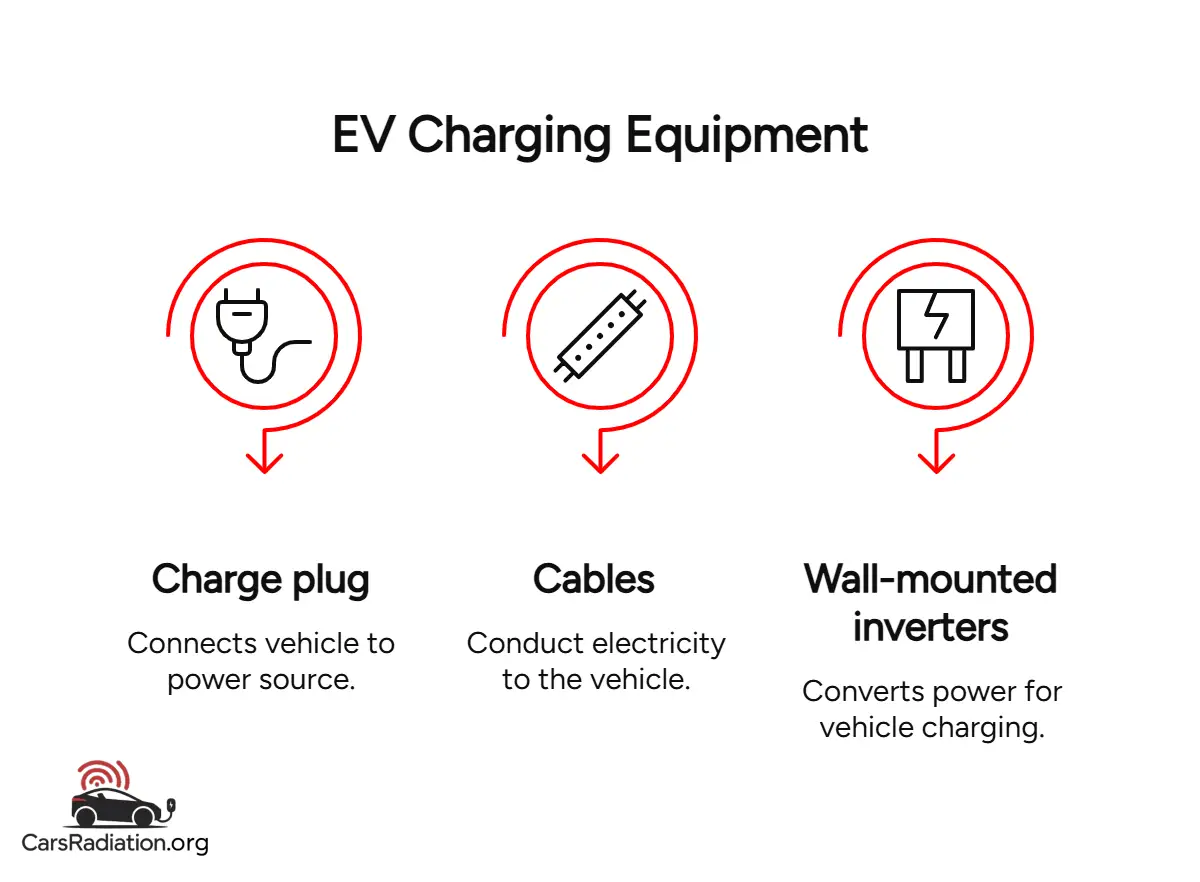Does Charging an Electric Car Produce Additional Radiation?

Yes. The process of charging an electric vehicle (EV) introduces additional electromagnetic field (EMF) exposure, primarily in the low-frequency spectrum. These emissions originate from the flow of high currents through conductive paths and power electronics involved in the energy transfer from the grid to the vehicle.
Electromagnetic Fields During Charging
When an EV is connected to a power source, electric and magnetic fields are generated not only by the onboard charging electronics but also by the external equipment, including the:
- Charge plug
- Cables
- In some cases, wall-mounted inverters
The magnitude and spatial distribution of these fields depend on several implementation-specific parameters: the topology of the high-voltage components, cable routing geometry, charging power levels, and the physical proximity of the user to the emitting structures.

Field Intensity Near Charging Setups
Field characterization studies indicate that the most significant exposure is associated with high-power direct current (DC) fast charging systems.
Measurements near these stations have recorded static magnetic fields (SMFs) in the range of up to 0.2 milliteslas (mT), and extremely low frequency (ELF) magnetic field peaks exceeding 100 microteslas (µT) in the immediate vicinity of the equipment.
These values are significantly above ambient environmental levels, and are subject to localized amplification due to structural and load-dependent conditions.
Influence on Health
Although the resultant exposure levels typically fall within current ICNIRP and IEEE guideline thresholds for acute effects, there remains scientific discourse around the cumulative biological effect of prolonged low-level exposure, particularly in constrained environments such as closed garages or small residential charging spaces.
In line with the precautionary principle, agencies including the World Health Organization (WHO) have recommended minimizing unnecessary exposure, especially for sensitive population segments such as pregnant women or individuals with implanted medical devices.
Component Design and Shielding
To lessen EMF exposure during the charging cycle, manufacturers implement a combination of shielding practices and spatial isolation techniques. These include grounded enclosures, magnetic field suppression materials, and design optimizations that increase the distance between high-voltage components and passenger compartments.
However, despite these efforts, localized field intensities may still reach levels that exceed those encountered during standard vehicle operation, particularly near power inverters, onboard rectifiers, or the connector interface.

